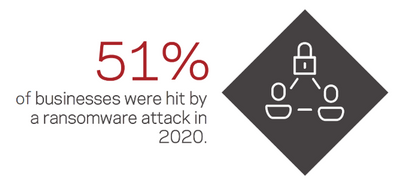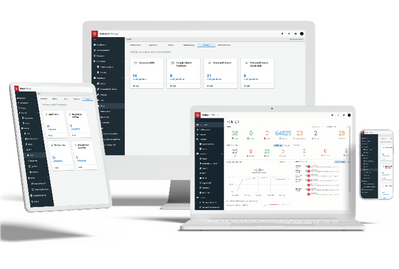Keep Calm and Mind the Transformation Gap With NetBackup


According to a 2020 Insight study, 67% of IT leaders state that IT modernization is essential to enabling business transformation initiatives. Yet only 25% of those same IT leaders have achieved their modernization objectives due to cost constraints, resource constraints, or other limitations.
The need to modernize IT is nothing new. From the mainframe era to client/server architectures, virtualization to containers, on-premises to cloud, and finally the multi-cloud architectures of today, we’ve watched organizations evolve how they do business – and manage their data – for decades.
And the speed at which this evolution is occurring is now even faster than before. The global pandemic has changed the way we work, communicate, and do business – perhaps permanently. As a result, IT organizations have been forced to modify their digital transformation strategies in the following ways:
- to increase automation skillsets,
- to extract more intelligence and insight from data,
- to deploy and manage workloads seamlessly on-premises and in the cloud,
- and to invest in new architectures that facilitate application deployment, such as containers.
IT leaders are well aware of this need.
And, pandemic or no pandemic, this pace will continue to accelerate. According to an IDC Cloud Pulse study, the number and complexity of applications will skyrocket over the next two years. The average number of applications will increase by 55%, and the percentage of applications built using complex modular development frameworks will increase by 160%.

THE TRANSFORMATION GAP
But all of this modernization doesn’t come without risks. Organizations must sometimes relax their requirements for standardization – or prioritize time-to-value over reliability and consistency – and this is what we at Veritas call a digital transformation gap. This gap is created when a company’s transformation efforts outpace its ability to effectively manage risks such as unplanned downtime or data loss, resulting from threats to availability such as ransomware, user error, or a plain old system failure.
Kubernetes is a perfect example of an area where this gap exists for many organizations, specifically in data protection. Application developers have embraced the Kubernetes platform to package and deploy applications rapidly, but many IT leaders are hesitant to proceed until adequate data protection is in place.

And the risks to data have increased in magnitude. The seamlessness of having data and applications span across resources on-premises and in the cloud can make it more vulnerable to security risks. Fifty-one percent of companies were hit by a ransomware attack in 2020, resulting in an average downtime of 19 days. So this is a costly problem that can’t be ignored.
Introducing the Newest Release of NetBackup
Today we announced our latest NetBackup release, version 9.1. This release includes the largest set of enhancements we’ve made to the platform in years – and these enhancements will help you manage these risks and close the digital transformation gap.
The release is centered around three key themes: Flexibility, Simplicity, and Resiliency. These are the core tenets for the NetBackup design team, and are central to how we think about and develop our new releases. I’m going to cover just a few of the major highlights below.
Flexibility
With support for over 800 data sources, 1400 storage targets, and over 60 cloud providers, we are already the industry’s most versatile data protection solution. But in this latest release of NetBackup, we take this flexibility to a whole new level with our integrated and native support for all major Kubernetes distributions such as Tanzu, OpenShift, and GKE.

This new support for Kubernetes allows you to configure protection and recovery using native tools for Kubernetes custom operators and APIs. It’s designed to enable the container architect or the NetBackup administrator to build protection for the environment using tools they are already familiar with. Add to that the ability to restore an entire namespace, individual resources, or just the associated persistent volumes – and you have a robust and flexible solution that will ensure your Kubernetes environment is well protected.
Another enhancement worth noting is our new multi-tiered recovery service level objectives – also known as Multi-SLO. This feature allows users to create customized recovery plans based on the specific RPO needs of different application tiers. They can mix replication and backup as required, all within the same VM workload – providing increased flexibility in how recovery operations are managed.
Simplicity
The highlight feature in this category is our new Intelligent Cloud Policies. In environments where new apps and services are rolled out constantly, backup administrators have a hard time keeping up. But using these new policies, they can now easily tag cloud assets and create Cloud Intelligent Groups, organize them by attributes that they define, and then assign protection plans accordingly. So there’s no longer a worry about new workloads being added without their knowledge. This feature is supported across all major cloud platforms.
A second new feature that increases simplicity – and lowers cost – is our new Cloud Autoscaling capability. This is not a new term for anyone familiar with public cloud offerings – it refers to the dynamic adjustment of compute resources based on current resource demands, and it’s now supported in this latest release of NetBackup. Initially supported on Azure but expanding soon to other cloud platforms, Cloud Autoscaling dramatically improves the economics of backup in a cloud environment. It can automatically add compute resources as backup jobs are required, and then releases those resources when they are no longer needed -- lowering the cost of operations in the cloud.
Resiliency
Ransomware continues to make headlines – it seems that a major company or industry is affected almost every day. And this is another area where NetBackup has made huge strides.
First, we are announcing new Continuous Data Protection (CDP) capabilities on VMware, with our new low-impact, stun-free backups. With a traditional VM backup, the backup application must first “stun” the VM, freezing all I/O, to allow the application to take a snapshot. Instead, NetBackup now tracks the block level changes, allowing the snapshot to be taken, with virtually no impact to the production environment.

Complementing these new CDP capabilities is the ability to now perform Instant Rollback on VMware. The combination of these powerful new features is unique in the industry – providing integrated protection with zero downtime – and the ability to recover from a ransomware attack to any point in time, within minutes.
Leveraging AI
Artificial Intelligence (AI) is a powerful tool in analytics. It can help find anomalies across massive amounts of data – and our latest release of NetBackup leverages this technology to help in the fight against ransomware with an AI-powered anomaly detection engine that analyzes changes in backup data. Attributes such as file count, dedupe rate, backup size, etc. are analyzed to identify anomalies and alert administrators when any unexpected changes occur. This makes NetBackup an important part of an organization’s cybersecurity strategy, and helps ensure that their data is always recoverable.
Minding the Gap
These are just a few of the many new features included in our latest NetBackup release. We are planning a series of follow-on blogs and on-demand feature demos in the coming weeks to dive into each of these topics in more detail. Please stay tuned on VOX and our social channels to learn more.
In the meantime, I hope you’re as excited as I am about this new NetBackup release. After you deploy, either a trial or download a copy, please feel free to reply and comment on how it is helping you to mind the digital transformation gap for your organization. I look forward to hearing from you!
Join us for Hey AVA, a chance to Ask Veritas Anything in a live Q&A June 15-18, 2021, and join the NetBackup 9 Group to connect with Veritas subject matter experts and industry peers.
Renew your Veritas maintenance and services to continue to get access to free support and upgrades, so you can make the most of your Veritas products. Renewing allows you to capitalize on the innovations in the latest releases as soon as they are available to keep your products up-to-date and operating as they should. It also allows you to leverage Veritas services to get the always-on, expert technical support required to quickly resolve issues. As a result, you extract more value from your Veritas investment, reduce your risks, so you can focus on your business. Learn more about Veritas maintenance and support at veritas.com/renewals.
